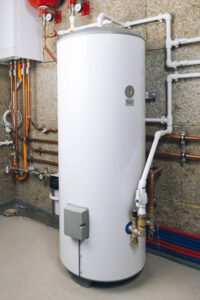Corsi Di Formazione Per Aziende has become essential in adapting to modern business demands. Companies invest in training to improve employee skills and performance. A well-designed program enhances efficiency and motivation. Continuous learning creates a more adaptable workforce.

Training methods have evolved to meet changing workplace needs. Traditional workshops are now complemented by digital platforms. Interactive modules engage employees better than passive learning. Blending different methods increases training effectiveness.
Employee engagement is a key factor in successful training. Interactive exercises encourage active participation. Real-world simulations enhance problem-solving skills. Engaged employees retain knowledge more effectively.
Customized training programs address specific business challenges. Personalized modules target individual skill gaps. Flexible schedules accommodate different learning paces. Tailored content increases relevance and effectiveness.
Technology plays a major role in modern training. Virtual reality creates immersive learning experiences. AI-driven platforms adapt content to learner performance. Mobile access allows employees to train anytime, anywhere.
Measuring training effectiveness ensures continuous improvement. Performance metrics track skill development and knowledge retention. Feedback from employees identifies gaps and improvement areas. Data analysis refines training strategies.
Leadership development is a common focus in corporate training. Effective leaders inspire teams and drive success. Training in communication and decision-making strengthens leadership skills. Strong leaders create more cohesive and motivated teams.
Soft skills training enhances workplace interactions. Communication, teamwork, and conflict resolution improve productivity. Emotional intelligence increases understanding and cooperation. Balanced skills create a more harmonious work environment.
Onboarding programs introduce new hires to company culture and expectations. Clear guidelines reduce confusion and improve job performance. Early engagement increases employee retention. Structured onboarding sets the tone for long-term success.
Sales training improves negotiation and customer relationship skills. Role-playing exercises simulate real-world scenarios. Understanding customer needs enhances product presentation. Effective sales strategies increase business growth.
Cross-training develops versatility and adaptability. Employees learn different roles within the company. Increased flexibility supports business continuity. Cross-trained teams handle workload fluctuations more effectively.
Compliance training ensures employees understand industry regulations. Clear guidelines reduce the risk of legal issues. Regular updates keep employees informed about policy changes. Strong compliance training protects company integrity.
Diversity and inclusion training promotes a more supportive work environment. Understanding different perspectives improves teamwork. Inclusive practices enhance creativity and problem-solving. A diverse workforce strengthens company culture.
Stress management training improves employee well-being. Techniques like mindfulness and relaxation exercises increase focus. Reduced stress leads to higher productivity. Balanced mental health supports long-term performance.
Remote work training adapts employees to virtual work environments. Effective communication and time management improve remote efficiency. Familiarity with virtual tools enhances collaboration. Remote work training ensures consistent performance.
Customer service training enhances client satisfaction. Active listening and problem-solving improve customer relationships. Handling complaints with professionalism builds trust. Positive customer interactions strengthen brand reputation.
Creative thinking training encourages innovation. Brainstorming sessions generate new ideas. Problem-solving exercises strengthen critical thinking. Creative teams develop competitive advantages.
Project management training improves task coordination and completion. Planning and scheduling techniques increase efficiency. Risk management reduces project delays. Strong project management improves overall outcomes.
Conflict resolution training strengthens team dynamics. Identifying root causes prevents recurring issues. Mediation techniques improve understanding and cooperation. Effective conflict management enhances team cohesion.
Performance appraisal training helps managers provide constructive feedback. Setting clear goals aligns employee efforts. Recognizing achievements increases motivation. Balanced feedback improves performance.
Digital literacy training keeps employees updated on technological advancements. Familiarity with software tools improves task efficiency. Cybersecurity awareness reduces data breaches. Digital competence supports business operations.
Networking and relationship-building training increase business opportunities. Professional communication improves external partnerships. Strategic networking enhances market presence. Strong relationships create long-term business value.
Innovation training fosters creative problem-solving. Encouraging experimentation reduces fear of failure. Idea-sharing sessions generate unique solutions. Innovation strengthens competitive positioning.
Employee mentorship programs enhance career development. Experienced mentors guide new hires through challenges. Peer support improves knowledge transfer. Mentorship strengthens company culture and retention.
Data analysis training enhances business decision-making. Interpreting trends improves strategic planning. Identifying patterns increases market responsiveness. Data-driven insights improve business performance.
Public speaking training improves communication confidence. Effective presentation skills increase audience engagement. Handling questions with composure enhances credibility. Strong speaking skills improve professional influence.
Team-building exercises strengthen collaboration. Problem-solving challenges improve trust and cooperation. Shared goals increase motivation and alignment. Unified teams handle challenges more effectively.
Ethics training reinforces company values and integrity. Understanding ethical standards improves decision-making. Transparency and accountability increase employee trust. Ethical practices strengthen company reputation.
Cybersecurity training protects business data. Recognizing phishing and threats reduces breaches. Safe data handling practices increase system security. Cyber-aware employees reduce security risks.
Emotional intelligence training improves leadership and teamwork. Self-awareness enhances decision-making. Managing emotions strengthens professional relationships. Emotional intelligence increases workplace harmony.
Presentation skills training improves professional communication. Structuring content enhances clarity and engagement. Confident delivery increases message impact. Effective presentation skills strengthen business influence.
Customer retention training strengthens long-term relationships. Understanding customer needs increases loyalty. Follow-up strategies improve satisfaction. Consistent service strengthens customer trust.
Decision-making training enhances business agility. Scenario-based exercises improve strategic thinking. Quick, informed decisions increase competitive advantage. Decisive leadership strengthens business resilience.
Workplace safety training reduces accidents and injuries. Proper equipment handling improves safety compliance. Emergency response procedures increase preparedness. A safe work environment improves employee confidence.
Strategic planning training improves business foresight. Identifying market trends strengthens positioning. Adapting to changes increases competitive edge. Proactive planning enhances business success.
Financial literacy training improves budget management. Understanding cash flow strengthens financial decisions. Cost-cutting strategies improve profitability. Financial awareness increases business stability.
Problem-solving training enhances independent thinking. Analyzing challenges increases creative solutions. Trial and error strengthen adaptability. Independent problem-solving improves operational efficiency.
Negotiation training increases deal success. Identifying leverage points improves bargaining power. Active listening enhances agreement terms. Effective negotiators create win-win outcomes.
Communication training improves workplace efficiency. Clear messaging reduces misunderstandings. Active listening enhances team cohesion. Effective communication increases productivity.
Health and wellness training improves employee morale. Encouraging work-life balance reduces burnout. Fitness and nutrition guidance increase energy levels. Healthy employees perform better.
Adaptation training enhances business flexibility. Responding to market changes increases resilience. Scenario-based training improves readiness. Adaptable teams handle disruption effectively.
Training retention improves long-term learning. Follow-up assessments reinforce knowledge. Practical application increases skill retention. Consistent practice strengthens learning outcomes.
Employee satisfaction increases with relevant training. Valued employees remain committed to company goals. Professional development strengthens loyalty. Satisfied employees improve workplace culture.
Corporate training shapes business success through continuous learning. Strong programs enhance employee capability and morale. Strategic training aligns with business goals. Adaptable workforces create competitive advantages.





